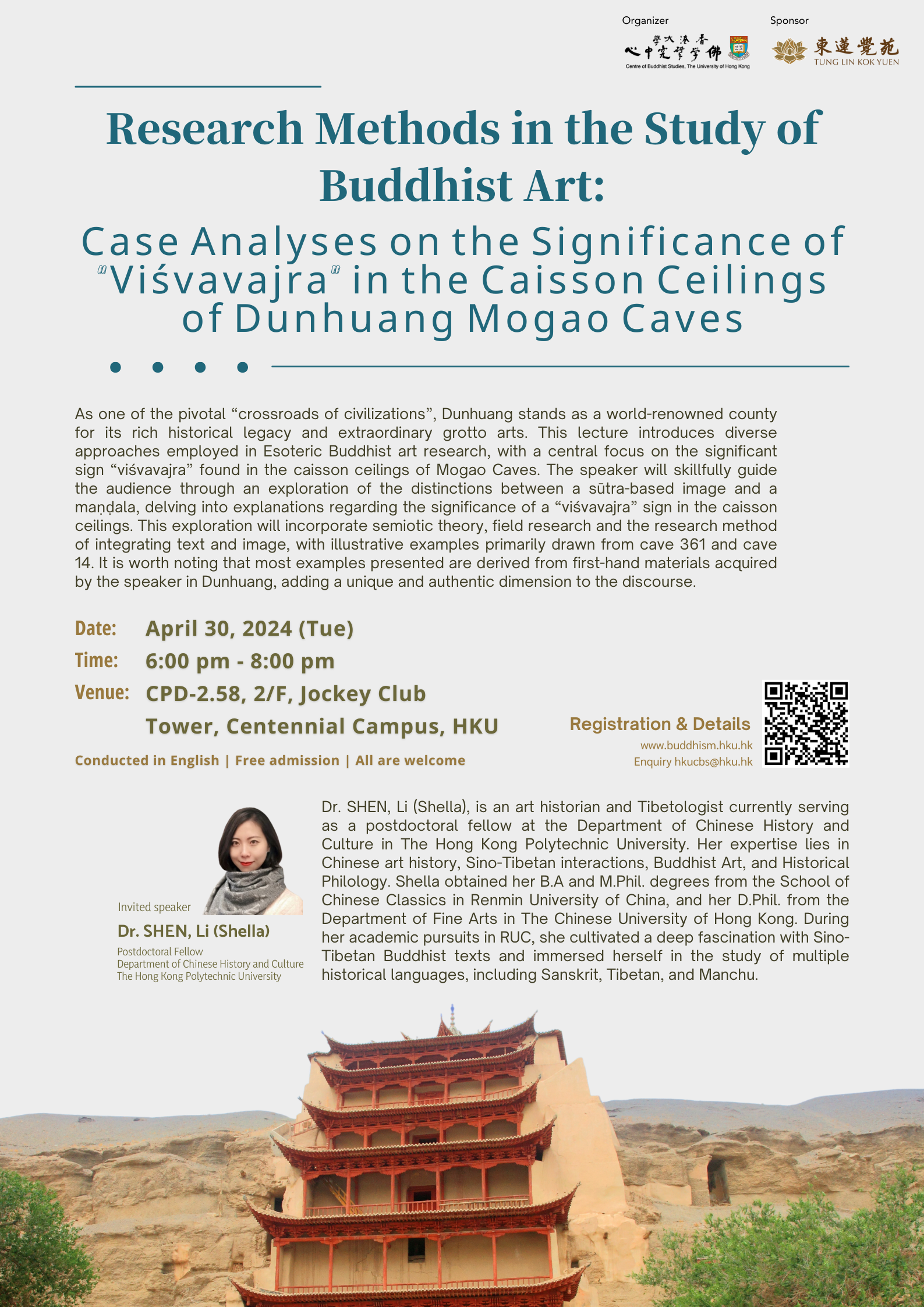Public Lecture
Research Methods in the Study of Buddhist Art: Case Analyses on the Significance of “Viśvavajra” in the Caisson Ceilings of Dunhuang Mogao Caves
Speaker: Dr. SHEN, Li (Shella)
Dr. SHEN, Li (Shella), is an art historian and Tibetologist currently serving as a postdoctoral fellow at the Department of Chinese History and Culture in The Hong Kong Polytechnic University. Her expertise lies in Chinese art history, Sino-Tibetan interactions, Buddhist Art, and Historical Philology. Shella obtained her B.A and M.Phil. degrees from the School of Chinese Classics in Renmin University of China, and her D.Phil. from the Department of Fine Arts in The Chinese University of Hong Kong. During her academic pursuits in RUC, she cultivated a deep fascination with Sino-Tibetan Buddhist texts and immersed herself in the study of multiple historical languages, including Sanskrit, Tibetan, and Manchu.
Time: 6-8 pm | 30 Apr 2024 (Tue)
Venue: CPD-2.58, 2/F, Jockey Club Tower, Centennial Campus, HKU
Conducted in English | Free admission | All are welcome |
Online registration required
Lecture Abstract
As one of the pivotal “crossroads of civilizations”, Dunhuang stands as a world-renowned county for its rich historical legacy and extraordinary grotto arts. This lecture introduces diverse approaches employed in Esoteric Buddhist art research, with a central focus on the significant sign “viśvavajra” found in the caisson ceilings of Mogao Caves. The speaker will skillfully guide the audience through an exploration of the distinctions between a sūtra-based image and a maṇḍala, delving into explanations regarding the significance of a “viśvavajra” sign in the caisson ceilings. This exploration will incorporate semiotic theory, field research and the research method of integrating text and image, with illustrative examples primarily drawn from cave 361 and cave 14. It is worth noting that most examples presented are derived from first-hand materials acquired by the speaker in Dunhuang, adding a unique and authentic dimension to the discourse.
